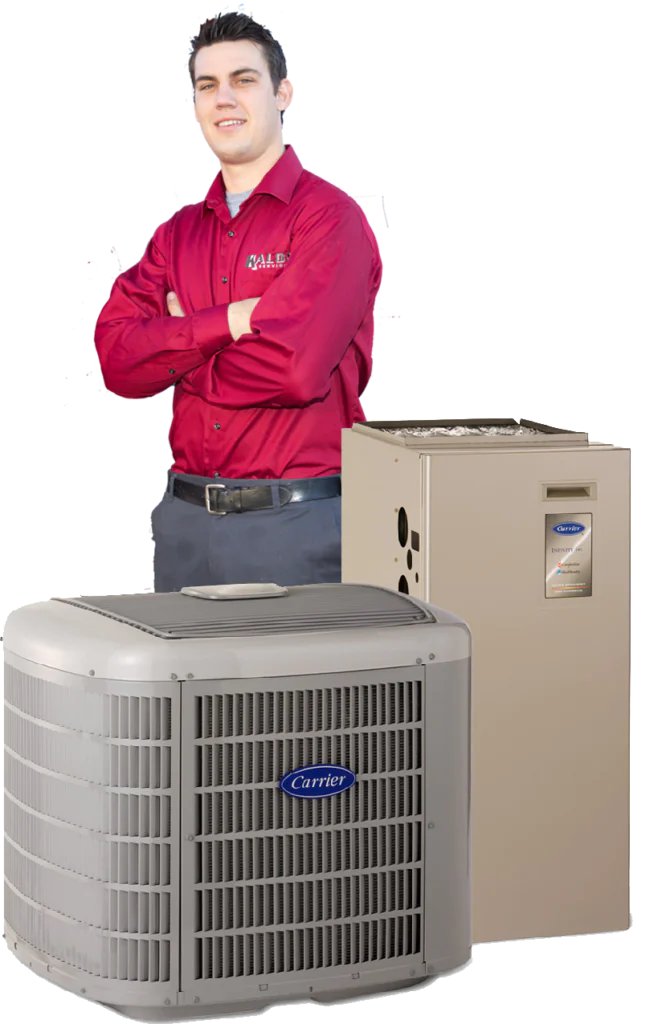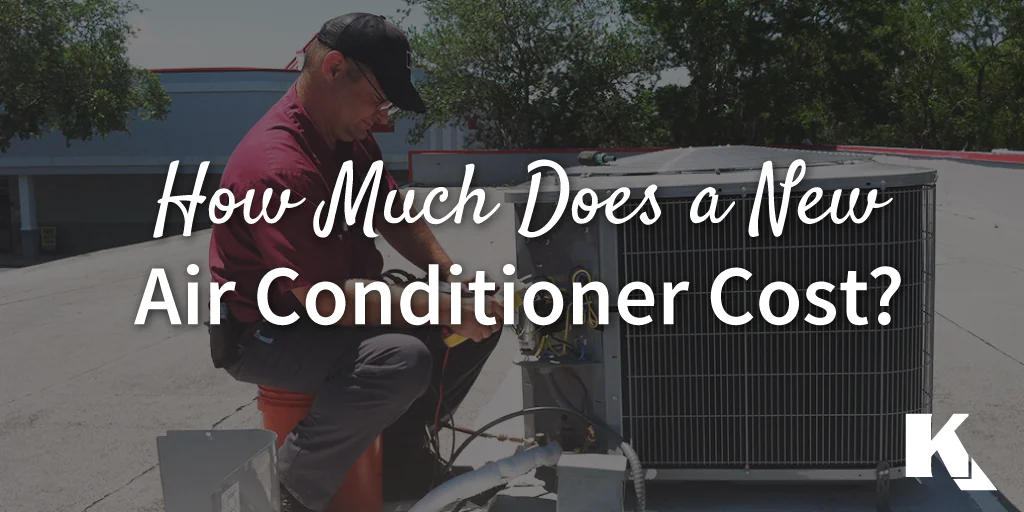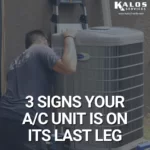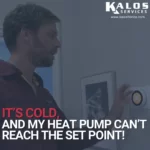“Is that air conditioner cost actually a fair price?”
This is always one of the first questions a customer has when they get their first quote for a new air conditioning system. The problem is, with so many options and variance, it's tough to give a simple answer about a general air conditioner cost. There is so much that goes into figuring how much it will cost to install that the suggested A/C prices are really vague and do not cover everything that might be involved. You can skip past the good stuff for the general price ranges at the bottom, or you can take the time to understand why a system might cost what it does and why someone else might get a very different price.
Typical Residential A/C Systems in Florida
The most common configuration for an air conditioner is a split system, where the “fan coil” or “air handler” half is inside, and the “condenser” is outside. Some systems are “packaged units” that are inside of a single enclosure outside.
A basic system might provide cooling only, with or without an electric heater integrated. “Heat pump” A/C systems can heat much more efficiently than with just the electric heater unit, and if you have a gas hookup, a furnace might be an option. Gas heating is generally more cost-efficient than a heat pump, but the heating efficiency that either can offer will cost you more up front.
Basic Air Conditioner Cost Install Inclusions
Replacing your A/C system involves a lot of work. There are often things beyond the system itself that can either affect the system or else cause damage. Other times, something might just be easier to do when replacing the system. It is almost always necessary for a qualified professional to come out to your home to determine what needs to be included in your new air conditioner cost. Whenever you see add-ons included, ask the service professionals why they've included them.
- Concrete Pad: having a good hurricane pad is required by code in Florida. It not only helps avoid damage in high winds, but it also stabilizes the condenser for more efficient operation and longer life.
- Drain lines: the “air handler” pulls moisture out of the air during normal operation. This moisture condenses on the coil and flows safely outside through the drain line. If there are breaks or damage to the line or supports, the condensation may instead leak and create water damage. Water might also back up, triggering safety devices that shut off the unit to avoid such damage. Replacing the drain lines helps ensure that the system will operate safely.
- Duct sections: air leakage into areas like attics or garages can dramatically affect efficiency. Collapsed sections or other damage might also affect the air balance and cause unexpected stress on the system. Damaged sections of ductwork can sometimes be repaired but are often cheaper and easier to replace entirely.
- Electrical: portions of the electrical circuit that supplies a system might be damaged or unsafe. This can be an issue for you as the resident, but it can also cause premature failure of key components, leading to high repair costs. Replacing at least the portion of the electrical circuit leading from the wall panel to the unit is generally recommended, but more aggressive electrical repairs are sometimes needed.
- Platform Top: if the “air handler” is in an upright position, it is usually positioned on top of a wooden return box. The top of this box will usually begin to sag with age, especially if poorly constructed or with water damage. Replacing this platform top is strongly recommended with any air conditioning system replacement.
- Refrigerant Lines: the copper piping that runs between the “air handler” and “condenser” carries the Freon or Puron, the refrigerant material specially formulated for thermal transfer. This copper tubing is exposed to the elements and degrades due to age and exposure to chemicals in the water or air. Failures here are relatively common and can have results ranging from requiring more frequent service to catastrophic equipment failure. Replacement is often not necessary but should always be considered.
- Thermostat: Replacement of older mercury-based thermostats is usually required, but a digital thermostat is usually all right if left alone. Aging thermostats are generally innocuous, as problems are typically limited to lost efficiency or temporary A/C failure. They don’t generally cause further damage. A new thermostat is still an inexpensive way to add convenient features.
Air Conditioner Sizing Options
The cooling capacity of an air conditioner is measured in tons, but the “tons” are not a measurement of how heavy the system is. Tonnage actually refers to the amount of heat an A/C unit can remove from a space in one hour.
Most reputable air conditioning contractors will calculate the appropriate tonnage of cooling capacity for a new system. Total home area, wall thickness, tree shading, window size and direction, and even awnings and curtains can all contribute to the overall expected heat load. It might even be different from what is currently installed in your home.
This is not an area that you can adjust. It is one thing if two contractors disagree on the tonnage required, and you should ask how the appropriate tonnage was figured, but this will be a set factor. A lower-capacity system won’t necessarily be able to keep up with the harsh Florida heat, but a higher-capacity system might waste energy by constantly stopping and starting; think how frustrated you get in stop-and-go traffic.
Efficiency Options
An area where you as the customer have a significant amount of flexibility is system efficiency. The Seasonal Energy Efficiency Ratio (SEER) is a general metric for how much it can cost to heat and cool your space year-round. The higher the number, the more cost-efficient the unit is to run, but beware: higher-efficiency systems can cost drastically more.
is system efficiency. The Seasonal Energy Efficiency Ratio (SEER) is a general metric for how much it can cost to heat and cool your space year-round. The higher the number, the more cost-efficient the unit is to run, but beware: higher-efficiency systems can cost drastically more.
Florida energy code does require a minimum of 14-SEER equipment for any new install or replacement, but efficiencies of up to 20-SEER are available for smaller-capacity units. There are also several intangibles that come with higher efficiency systems, such as improved dehumidification and filtration options or even advanced controls.
When an air conditioning company is quoting a new unit for you, make sure to get at least three efficiency options from them in order to see the new air conditioner cost differences. Some A/C companies will only quote higher efficiency units to influence customers to purchase the bigger ticket item, so be sure you request to see an installation price for a 14 SEER unit to compare costs accurately. At Kalos Services, Inc., you'll always receive four efficiency options to choose from.
Price Ranges:
| Rating | 2 Tons | 3 Tons | 4 Tons | 5 Tons |
| 14 SEER | $4000-$5500 | $4750-$6250 | $5000-$6500 | $5750-$7250 |
| 15-16 SEER | $5750-$7250 | $6000-$7500 | $6250-$7750 | $7000-&8500 |
| 17-18 SEER | $9000-$10,500 | $9500-$11,000 | $10,000-$11,500 | $11,250-$13,000 |
| 19-20 SEER | $$11,500-$13,000 | $12,500-$14,000 | $13,000-$14,500 | $13,500-$15,000 |
As you do your research, be sure to include a qualified expert to ensure that the air conditioner cost you are expecting is accurate. Never accept air conditioner prices handed out over the phone as accurate or reliable. Be sure the air conditioning company visits your property to give you a thorough quote addressing every aspect of the scope of work.




